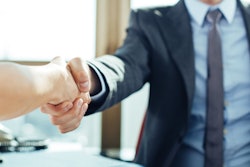Dear Molecular Imaging Insider,
A plethora of new radiotracers are being developed that promise to expand the utility of molecular imaging, particularly PET for oncology applications.
One of these is F-18 rhPSMA-7.3, a novel F-18-labeled radiohybrid prostate-specific membrane antigen (rhPSMA) PET imaging agent currently being evaluated in two phase III trials for use in primary prostate cancer staging. Researchers at the Technical University of Munich who developed the compound have offered what they consider a real-world look at how it performs compared with contrast-enhanced CT. Read about it in this edition's Insider Exclusive.
F-18 PSMA-1007 is another experimental tracer showing promise in primary prostate cancer staging. In a recent study, Australian researchers showed that F-18 PSMA-1007 correlated significantly with clinical criteria for assessing patients' risk of metastases.
In other PET radiotracer research, Chinese researchers reported that a gallium-68-labeled fibroblast-activation protein inhibitor radiotracer may outperform F-18 FDG on PET/CT in staging lung cancer, particularly in the detection of metastasis to the brain, lymph nodes, bone, and pleura.
Yet PET's workhorse radiotracer, F-18 FDG, continues to prove its value. An Austrian and Iranian group found that F-18 FDG PET/CT scans predicted three- and five-year overall survival rates in metastatic melanoma patients receiving immunotherapy.
PET imaging also continues to reveal new findings in Alzheimer's disease research, such as the following:
- A study using Pittsburgh compound B (PiB) found clinical anxiety may increase the risk of cognitive decline in people with early signs of the disease.
- Combining PET imaging with a new blood test for Alzheimer's disease may be the best approach to identify people to participate in clinical drug trials, according to a Swiss group.
In other research we've covered, Harvard Medical School investigators compared imaging results between PET/MRI and PET/CT, CT, and MRI alone for diagnosing peritoneal carcinomatosis in patients with primary abdominal malignancies. They found PET/MRI offers significant advantages over standard approaches for detecting cancer.
Also, SPECT/CT received a reality check. A group of Japanese and U.S. researchers showed augmented reality visualization of SPECT/CT data can help guide surgeons in identifying sentinel lymph nodes in patients with metastatic melanoma.
Finally, in professional news, nuclear medicine physicians experienced 10.4% growth in average pay ($398,544) in 2021, according to a salary survey by Doximity. After not cracking the top 10 in 2020, nuclear medicine vaulted to third on a list of specialties with increases.
Happy New Year! Be sure to check back regularly for more news in your Molecular Imaging Community!




















